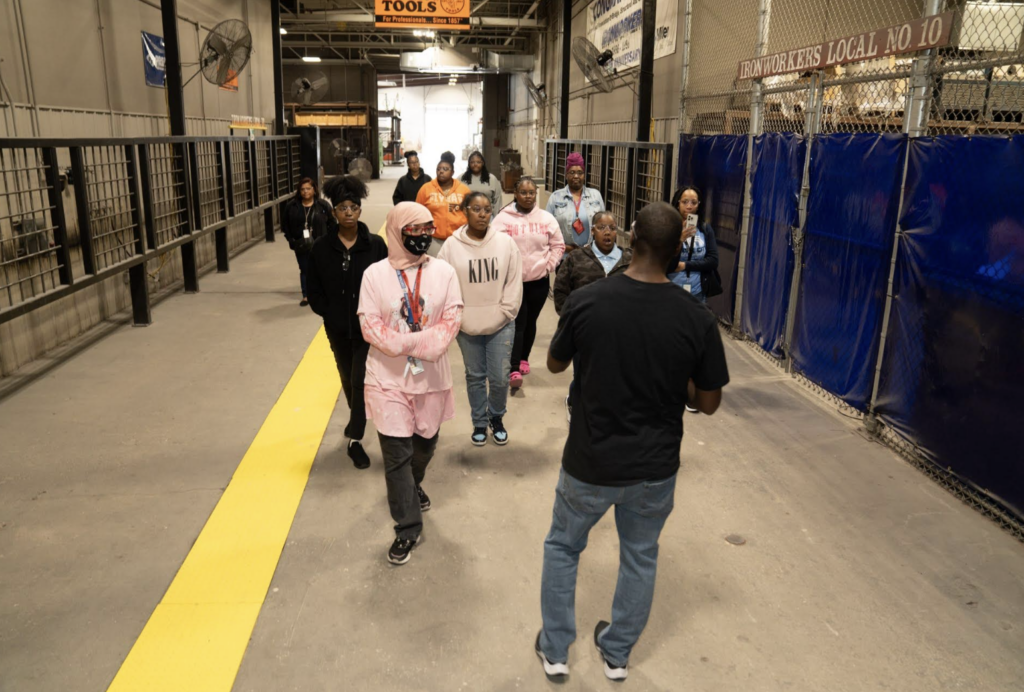Blight Crawlers

It’s February in Kansas City, which means I’m dreaming. I’m floating in a lake, the brilliant sun shimmering off the waves. A rope is slowly pulling taut in the warm water. I lie back and enjoy the smell of sunscreen and gasoline … then I’m up and off on my awesome Cosmic Ocean wakeboard, ripping across the hard white water and doing flips in the air, spraying leathered geezers in their nearby fishing boats.
Knowing how much imagination it takes to get through February, I was psyched to read back in October that Bass Pro Shops wanted to move into the sinking Bannister Mall. We were set to get “three football fields of shopping fun” and our own 1.5-acre pond. I’d be able to fuel my fantasies by stocking up on kerosene and Uncle Buck’s Peanut Oil every winter weekend.
George Flescher, president of the Hickman Mills school board, has been dreaming, too — about a new mall that won’t rob his school district of tax revenues. On February 7, the city council approved a deal granting the mall’s owners $31.5 million in tax-increment financing for the project.
Bannister was apparently too blighted to save; the TIF Commission concluded that any developer would lose his waders redoing the mall without tax breaks.
But Hickman Mills school officials had a hard time swallowing the idea that the mall’s owners, the Teachers Insurance and Annuity Association — a gigantic education-system pension-fund manager that oversees more than $260 billion in assets — needed that much help.
It was obvious that the project was going to fly anyway, so up until the last minute, school officials were scrapping for whatever financial help they could get. Eventually the mall’s owners agreed not to keep trying to get their property taxes lowered and to hold a glorified bake sale guaranteeing the district $10,000 every year. Also, 26 surrounding property owners (including the mall) agreed to increase their own taxes to choke out an annual $50,000 for the district. The state will have to kick in some money, too — during a year when Missouri’s budget faces crippling cutbacks.
When the plan passed the council’s Economic Development Committee on February 6, the sun was shining all around. Chairman Ed Ford seemed to be drooling at the thought of flicking his rod over that 1.5-acre pond. “It’s a very exciting day for us in the 6th District,” said councilman Chuck Eddy.
Outside in the hall afterward, though, Hickman Mills officials were more circumspect.
“This $260 billion company allowed a city and school district to fight it out over $50,000 a year,” scoffed Jim Feuerborn, the district’s associate superintendent of business. “The mall owners do nothing and today get thanked.”
The Kansas City face of those out-of-town mall owners was an attorney named Dave Frantze, of Stinson Mag & Fizzell.
Frantze doesn’t think it’s productive to respond to complaints about the process. “Those people were in the heat of discussions,” he says of the Hickman Mills community. “We feel like we’ve really worked hard and done everything we can. We just need to move forward and be an institution that’s a part of their community and do an even better job of that than in the past.”
Which is exactly what a victorious development lawyer is supposed to say.
The city council approved the Bannister Mall plan after a hugely entertaining and uncivil debate — several council members hadn’t even seen the proposal and wanted just one week to study it. But it’s on such a fast track there was no time for nailing down numbers.
The next day, Dave Frantze sat down with 25 other members of Mayor Kay Barnes’ brand-new Greater Downtown Development Authority, which she hopes will fix downtown. It was the first meeting of this esteemed body, and Barnes served them boxed lunches from Napoleon’s. If state legislators approve, these lawyers, developers, philanthropists and businessmen will have the power to buy and sell property, tear down buildings and decide who gets development contracts.
Frantze sat two seats away from Jonathan Kemper, whose Tower Properties recently drove a downtown bar owner out of business by preventing him from getting a 3 a.m. liquor license (see Casey Logan’s “It Only Takes a Spark,” January 3). Also sharing Frantze’s table was Jon Copaken of Copaken White & Blitt, a developer who recently wanted even more than the usual tax breaks to lure Waddell & Reed out of Kansas — not to downtown, but to Copaken’s unbuilt Plaza Colonnade. Other big fish in this think tank were the same ones who have been talking about reviving downtown for decades — but it’s still mostly boarded-up storefronts.
“If folks believe that [the mayor’s Downtown Development Authority] is business as usual, I’m not sure there’s a way in advance to relieve people of that notion,” Frantze says. “Some of the people in this group are stakeholders who have stayed downtown, haven’t moved across the state line and to the suburbs. I anticipate that there’ll be a lot of opportunities to have productive things happen in downtown as a result of this organization.”
But it’s also easy to imagine the mayor’s new group producing little more than stink bait.
Before the council approved the Bannister plan, Dennis O’Neill of the Fairwood Homes Association groused that “the developer’s going to do well; the politicians and lawyers for the developers are going to do well, but the school district isn’t.”
The politicians and lawyers and developers now charged with fixing downtown have a chance to do so without breeding cynicism among the small fry. In the meantime, though, it’s just February in Kansas City.




